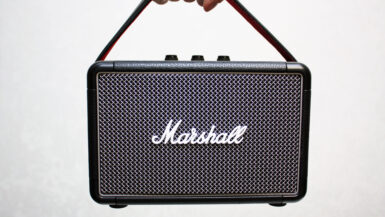In today’s rapidly evolving technological landscape, voice-enabled smart home devices have emerged as a game-changer for people with disabilities. This article delves into the remarkable ways these innovative tools are transforming lives by enhancing accessibility and independence for those with various physical and cognitive impairments. We will explore the diverse range of devices available, their integration into everyday routines, and the profound impact they have on fostering an inclusive and convenient living environment for individuals with disabilities. Join us as we examine the empowering potential of voice-enabled technology in creating a more accessible world.
Enhanced Communication with Voice-Activated Assistants for the Hearing Impaired
Voice-activated smart home devices have opened up new communication channels for individuals with hearing impairments. By using advanced voice recognition technology and integrating with other handy tools, these devices have proven to be an indispensable asset in helping the hearing impaired navigate their everyday lives more efficiently. In this section, we will delve into some of the most notable ways in which these devices are assisting in breaking down communication barriers and offering a more accessible living environment for those with hearing loss.
Seamless Integration with Hearing Aids
One of the most significant developments in the realm of voice-enabled devices is their compatibility with hearing aids. Many modern hearing aids now support direct streaming from popular voice assistants like Amazon Alexa and Google Assistant. This integration allows users to receive audio notifications, news updates, and even phone calls directly through their hearing aids, ensuring smooth and uninterrupted communication.
Visual and Haptic Feedback
Recognizing the importance of visual and tactile cues for individuals with hearing impairments, voice-activated assistants are increasingly incorporating visual and haptic feedback features. Users can receive visual notifications on their smartphones or smart displays in response to voice commands, enabling them to confirm the successful execution of a command without relying solely on auditory signals. Additionally, some devices offer haptic feedback through vibrations, which can serve as essential alerts for those with hearing loss.
Smart Home Automation for Enhanced Safety
Safety is paramount, especially for individuals with disabilities. Voice-enabled devices offer a myriad of smart home automation options that cater specifically to the needs of the hearing impaired. From flashing lights synced with doorbells or alarm systems to voice-controlled security cameras, these innovative solutions contribute to a more secure and accessible living environment.
Speech-to-Text Functionality
For those who struggle with verbal communication, speech-to-text functionality offered by voice-activated assistants can be a game-changer. By transcribing spoken words into written text, these devices enable users to participate in conversations, meetings, or even dictate messages more effectively. This feature empowers individuals with hearing impairments to communicate with ease and confidence.
Voice-activated smart home devices have indeed proven to be a valuable tool in breaking down communication barriers and enhancing the overall quality of life for individuals with hearing impairments. By embracing these innovations, we are taking significant strides towards creating a more inclusive, accessible, and empowering world for all.
Simplifying Daily Tasks for Individuals with Mobility Limitations
As the world becomes more reliant on technology, voice-enabled smart home devices are playing an increasingly critical role in enhancing accessibility for individuals with mobility limitations. These ingenious devices offer a plethora of features that cater to the unique needs of those who face challenges in performing everyday tasks. By utilizing voice commands, users can efficiently control various aspects of their living environment, ultimately promoting independence and improving their overall quality of life. In this subsection, we will explore some remarkable ways voice-enabled devices are simplifying daily tasks for individuals with mobility limitations.
Hands-Free Control of Home Appliances
One of the most significant benefits of voice-enabled smart home devices is the ability to manage home appliances without the need for physical interaction. Users can control lights, thermostats, and even kitchen appliances by simply issuing voice commands to their smart assistant. This hands-free approach eliminates the need for manual operation, making it easier and more convenient for those with mobility limitations to maintain a comfortable and functional living space.
Effortless Access to Entertainment and Information
Voice-activated devices have revolutionized the way individuals with mobility limitations access entertainment and information. By issuing a simple voice command, users can play music, listen to audiobooks, watch videos, or receive the latest news updates. This not only provides a source of enjoyment but also helps individuals stay informed and connected to the world without struggling with traditional input methods.
Streamlined Management of Daily Routines
Managing daily routines can be a daunting task for individuals with mobility limitations. However, voice-enabled smart home devices offer an array of features designed to streamline these activities. Users can set reminders, create shopping lists, or even receive step-by-step guidance for complex tasks, all by simply speaking to their voice assistant. This level of support fosters greater self-sufficiency and minimizes the need for assistance from others.
Remote Monitoring and Control of Home Security
Maintaining a safe and secure living environment is crucial for everyone, including those with mobility limitations. Voice-enabled devices offer remote monitoring and control of home security systems, allowing users to keep an eye on their surroundings and respond to potential threats without physically interacting with security equipment. These devices can also be integrated with other smart home technologies, such as door locks and cameras, ensuring a comprehensive security solution tailored to the user’s needs.
Enhanced Social Interaction and Mental Well-Being
Lastly, voice-enabled devices can also play a vital role in promoting mental well-being and social interaction for individuals with mobility limitations. These devices allow users to make phone calls, send messages, or even join group conversations, all through voice commands. By facilitating effortless communication, voice-activated assistants help combat feelings of isolation and promote a sense of belonging and connection with others.
Voice-enabled smart home devices have undoubtedly transformed the lives of individuals with mobility limitations by simplifying daily tasks and promoting independence. As technology continues to advance, we can only expect these devices to become even more accessible, versatile, and empowering, fostering a more inclusive and convenient world for everyone.
Customizable Smart Home Solutions for Visual Impairments
Voice-enabled devices have been making significant strides in offering customizable smart home solutions for individuals with visual impairments. These innovative devices allow users to control various aspects of their living environment through voice commands, making daily tasks more accessible and convenient. In this subsection, we will explore some of the remarkable ways voice-enabled devices are helping to create a more inclusive and supportive living space for those with visual impairments.
Enhanced Navigation and Mobility within the Home
One of the most significant advantages of voice-enabled devices for individuals with visual impairments is the ability to navigate their home environment with increased ease and confidence. By integrating with smart home systems, voice assistants can provide real-time feedback on the location of obstacles, the status of doors and windows, and even guide users through their home using auditory cues. This enhanced navigation support empowers individuals to move independently and safely within their living space.
Accessible Control of Lighting and Temperature
Managing lighting and temperature settings can be challenging for individuals with visual impairments. Voice-enabled devices offer a user-friendly solution by allowing users to adjust these settings using voice commands. Users can easily turn lights on or off, dim them, or even change their color according to their preferences. Similarly, voice assistants can be used to control smart thermostats, ensuring a comfortable and energy-efficient living environment.
Effortless Access to Information and Entertainment
Just like their counterparts with mobility limitations, individuals with visual impairments also benefit from the convenience of accessing information and entertainment through voice-enabled devices. Users can listen to their favorite music, podcasts, or audiobooks, receive news updates, or even ask general knowledge questions without having to rely on traditional input methods. This seamless access to content encourages a more independent and enjoyable lifestyle.
Voice-Activated Shopping and Meal Planning
Voice-enabled devices can significantly simplify shopping and meal planning tasks for individuals with visual impairments. By dictating shopping lists or meal ideas to their voice assistant, users can create organized and accessible records of their needs without the need for traditional writing methods. Additionally, some devices even offer integrated grocery delivery services or recipe suggestions, making the entire process more streamlined and enjoyable.
Improved Communication and Social Interaction
Lastly, voice-enabled devices can also help enhance communication and social interaction for individuals with visual impairments. These devices allow users to make phone calls, send messages, or even participate in group conversations, all through voice commands. By facilitating seamless communication, voice-activated assistants help to bridge the gap between people with visual impairments and their friends, family, and the wider community.
The innovative and customizable smart home solutions provided by voice-enabled devices are revolutionizing the way individuals with visual impairments experience their living environment. By offering increased accessibility, convenience, and independence, these devices play a crucial role in fostering a more inclusive and empowering world for everyone.
Promoting Independence through Voice-Controlled Home Security
Voice-enabled devices are playing an increasingly important role in enhancing safety and independence for people with disabilities. By integrating with home security systems, these devices allow users to monitor and control various aspects of their home’s safety using only their voice. In this subsection, we will explore the diverse ways in which voice-controlled home security systems are empowering individuals with disabilities to maintain a secure and accessible living environment.
Effortless Access to Security Features
One of the primary advantages of voice-controlled home security systems is the ease with which users can access and manage various security features. By simply speaking to their voice assistant, individuals with disabilities can arm or disarm their security systems, lock or unlock doors, and even receive real-time updates on the status of their home. This hands-free approach to home security ensures that all users can maintain a safe environment without the need for physical interaction with security equipment.
Real-Time Alerts and Notifications
Voice-enabled devices offer real-time alerts and notifications to keep users informed and aware of any security-related incidents in their home. For individuals with disabilities, these auditory alerts can be particularly valuable, as they provide an accessible means of staying informed about potential safety hazards. In addition to auditory alerts, some voice assistants also offer visual and haptic notifications, catering to the unique needs and preferences of each user.
Remote Monitoring and Control
Another significant benefit of voice-controlled home security systems is the ability to remotely monitor and control various aspects of a user’s home environment. This feature is particularly useful for individuals with disabilities, who may face challenges in physically accessing certain areas of their home. By using voice commands, users can check the status of security cameras, adjust lighting to deter potential intruders or even activate emergency services if needed, all from the comfort of their preferred location.
Integration with Other Smart Home Technologies
Voice-controlled home security systems can also be integrated with other smart home technologies, offering a comprehensive and customizable security solution tailored to the specific needs of each individual. For example, users can connect their voice-enabled devices to smart lighting systems, allowing them to control lights both inside and outside their home to enhance security. Additionally, integration with smart doorbells and intercom systems enables users to communicate with visitors and manage access to their home without the need for physical interaction.
Enhanced Peace of Mind and Confidence
Ultimately, voice-controlled home security systems provide individuals with disabilities with an enhanced sense of peace of mind and confidence in their ability to maintain a secure living environment. By offering accessible, hands-free control over various security features, these devices empower users to take charge of their safety and enjoy greater independence in their daily lives.
In summary, voice-enabled devices are revolutionizing the way individuals with disabilities approach home security, making it more accessible and convenient. By embracing these innovative solutions, we can create a safer, more inclusive, and empowering world for all.
Boosting Mental Health and Social Interaction with Voice-Enabled Device Features
Voice-enabled devices are not only transforming the way individuals with disabilities navigate their daily lives but also playing a crucial role in promoting mental health and social interaction. By offering a diverse range of features designed to connect users with their loved ones, these devices are helping to reduce feelings of isolation and improve overall well-being. In this subsection, we will delve into the various ways voice-enabled devices are fostering emotional support and social connections for people with disabilities.
Effortless Communication through Voice Commands
One of the most significant benefits of voice-enabled devices is the ability to facilitate seamless communication through voice commands. Users can make phone calls, send text messages, and even participate in group chats without relying on traditional input methods. This ease of interaction allows individuals with disabilities to maintain regular contact with friends, family, and support networks, ultimately fostering a sense of belonging and social connection.
Access to Mental Health Resources and Support
Voice-enabled devices also offer access to a wide range of mental health resources and support services. Users can request information on coping strategies, relaxation techniques, or even connect with professional counselors and support groups, all through simple voice commands. By providing easy access to these resources, voice-enabled devices help individuals with disabilities proactively manage their mental health and seek support when needed.
Engaging in Hobbies and Interests
Another way voice-enabled devices contribute to improved mental health and social interaction is by providing users with the means to engage in their hobbies and interests. From listening to music and audiobooks to learning new skills and participating in online communities, these devices offer a wealth of opportunities for personal growth and enjoyment. By fostering engagement in activities that promote personal satisfaction and well-being, voice-enabled devices contribute to a more balanced and fulfilling lifestyle for individuals with disabilities.
Creating Personalized Routines and Reminders
Voice-enabled devices can also help individuals with disabilities establish personalized routines and reminders, promoting a sense of structure and consistency in their daily lives. Users can set regular reminders for self-care activities, medication management, or even social engagements, ensuring that they maintain a healthy balance between their physical, emotional, and social needs. By offering this level of personalization and support, voice-enabled devices empower users to take charge of their mental health and well-being.
Building a Supportive Community through Voice-Activated Devices
Lastly, voice-enabled devices can also play a crucial role in building a supportive community for individuals with disabilities. By connecting users with others who share similar experiences or interests, these devices facilitate the formation of meaningful relationships and support networks. In turn, this sense of community can help to alleviate feelings of isolation, boost self-esteem, and promote overall mental health and well-being.
Voice-enabled devices have proven to be invaluable tools in enhancing the mental health and social interaction of individuals with disabilities. By providing accessible means of communication, resources, and opportunities for personal growth, these devices are helping to foster emotional support and social connections that contribute to a more fulfilling and balanced lifestyle. Embracing the potential of voice-enabled technology, we can work towards creating a more inclusive, supportive, and empowering world for all.





Leave a reply